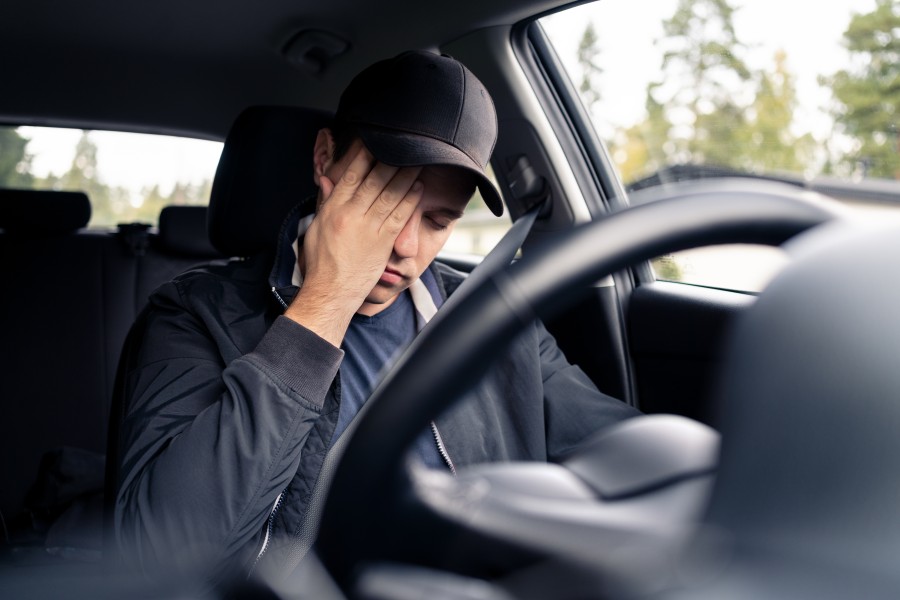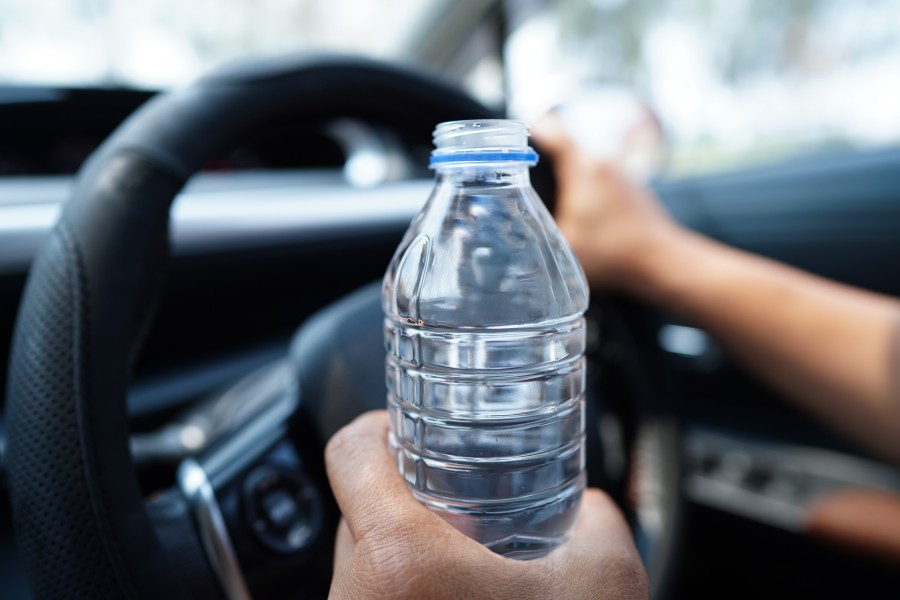Driving with diabetes

Driving with diabetes
Driving is an essential part of daily life for a lot of people, allowing you to travel to and from work, see your friends or take care of your family [1].
While most people with diabetes are perfectly capable of driving without any issues, driving with diabetes does come with some risks and things to be aware of [1]. In this article, we explore these risks and ways to prevent them. We also review legal restrictions around driving with diabetes, what to do in case of hypoglycaemia and more. Let’s take a closer look.
How diabetes can affect your driving
According to some estimates, having diabetes may raise the risk of being in a car accident by up to 19%, although your personal risk may be very different [1].
This is because diabetes could potentially affect your driving performance, either due to the increased risk of hypoglycaemia or other diabetes-related complications [1, 2].
Hypoglycaemia (when your blood glucose levels drop too low) is a common side effect of insulin therapy [2]. When it occurs, it can affect the brain and impair the cognitive functions that you need for driving, such as [2]:
- Attention
- Reaction time
- Hand-eye coordination
If you develop diabetes complications, like nerve damage or vision issues, this can also make it harder for you to drive [1, 2].
Driving and diabetes-related conditions

Driving and diabetes-related conditions
There are a number of diabetes-related complications which can affect your ability to drive [1, 2]. These can include problems with seeing clearly or with the nerves that allow you to sense your hands and feet [1, 2].
Complications that affect your vision
Being able to see when driving is obviously essential to safety [2]. Diabetes raises the risk of developing certain eye disorders that could affect your ability to drive [1, 2]:
- Diabetic retinopathy — a condition affecting blood vessels in the eye’s retina, which is the part of your eye that senses light and sends the message to your brain through the optic nerve [3]. Retinopathy causes vision loss and blindness over time [3].
- Cataracts — these are cloudy areas that cover your eye and cause blurry vision [4].
- Diabetic macular oedema (DME) — the macula is a part of the retina that ensures sharp vision, but in DME, the blood vessels in the retina leak into the macula, causing blurry vision [3].
- Neovascular glaucoma — Diabetic retinopathy can cause abnormal blood vessels to grow out of the retina, stopping fluid from draining out of the eye. This causes a type of glaucoma, and can cause vision loss and blindness [3].
Complications that affect your nerve function
Nerve damage, or neuropathy, is a diabetes complication that can reduce the sensation in your hands and feet, and impair your bodily awareness [2]. When nerve damage affects your feet (like in the case of ‘diabetic foot’), you may find it more difficult to gauge the pressure on the accelerator, clutch pedal or brake [1, 2].
On top of this, some of the medications used to treat neuropathic pain can cause drowsiness [2], which could also affect your driving ability.
To learn more about nerve damage complications, read our dedicated article on diabetic neuropathy.
Other diabetes complications
In older people with diabetes, there is a risk of issues with the blood vessels in the brain (cerebrovascular disease), which can affect cognitive function and, therefore, your driving ability [2].
Surgery to your feet may also impair the ability to use the foot pedal while driving, although your car can be adapted to include hand-operated controls [2].
When you need to inform the authorities
There may be regulations in place for driving with diabetes [2] and these may depend on the treatment you have or the type of vehicle you drive [2, 5].
These regulations may restrict you from driving certain vehicles or only allow you to drive under specific circumstances — if you carry out regular blood glucose checks, for example [2].
Most countries with regulations in place distinguish between insulin-treated diabetes and other forms of diabetes [2].
Driving for work if you have diabetes
If you drive commercial vehicles such as lorries, buses, coaches or taxis in the UK, you may receive a one-year license for your vehicle that gets reviewed yearly by an independent diabetologist [7].
You may need to show three months’ worth of blood tests, and you must not have had any episodes of severe hypoglycaemia in the last 12 months, either awake or asleep [6, 7]. You will have to provide evidence of regular blood glucose monitoring using finger prick testing (and not flash glucose monitors or continuous glucose monitoring systems) [6, 7].
Your vision will also be tested and certified by a diabetologist and specialist eye test [7].
Taxi drivers receive their car licenses from their local authorities [7]. Some local authorities do not allow a license to insulin-treated taxi drivers, but there is no law that bans it completely across the country [7].
Driving with diabetes checklist

Driving with diabetes checklist
To make sure you drive safely with insulin-treated diabetes, experts recommend the following tips [2]:
- Keep a finger-prick blood glucose monitor and blood glucose strips with you at all times.
- Keep a source of fast-acting carbs within easy reach in case of emergencies (such as glucose tablets or sweets).
- Have some form of diabetes ID (such as an ID card or bracelet) on you so people can help you quickly in emergencies.
- Check your blood glucose at most one hour before you start driving. More frequent testing may be required if you’ve changed your lifestyle or routine, you’re pregnant, you’ve worked out or you didn’t have enough time to eat.
- Ensure your blood glucose is above 5.0 mmol/l (90 mg/dl) while driving.
- Have a snack if your blood glucose drops at or below 5.0 mmol/l. Stop driving if it drops below 4.0 mmol/l (72 mg/dl) or you have hypoglycaemia symptoms.
Tips for longer drives
According to the American Diabetes Association (ADA), drivers should never begin a journey with low normal blood glucose (for example, between 70 and 90 mg/dl or 3.9–5.0 mmol/L) without having carbs to prevent hypoglycaemia [1].
If driving for longer, experts recommend checking your blood glucose every two hours throughout your journey [2].
On longer journeys, take breaks to rest, eat regular meals and ensure you have enough snacks and hydration for the drive. [2].
What to do if you have a hypo while driving
If you have a hypo, or if your blood glucose drops below 4.0 mmol/l (72 mg/dl), stop driving and park the vehicle in a safe location as soon as possible [2].
Measure your blood glucose and treat it appropriately [1]. You can have a quick-acting source of glucose, such as [1]:
- Juice
- Non-diet fizzy drinks
- Soft Sugar jelly sweets
- Glucose tablets
Measure your blood glucose again, and do not drive until it is back to normal [2].
A note of caution: it takes a while for your cognitive functions to return to normal after blood glucose has been restored to the target range [2]. You should wait at least 45 minutes after blood glucose has returned to normal before you start driving again [2].
Driving with diabetes can be done safely, provided that you follow some precautions [1]. Make sure you follow the legal restrictions in your country and are always prepared in the event of hypoglycaemia [2, 6].
Sources:
- American Diabetes Association, Lorber D, Anderson J, et al. Diabetes and driving. Diabetes Care. 2014;37 Suppl 1:S97-S103. doi:10.2337/dc14-S097, https://diabetesjournals.org/care/article/37/Supplement_1/S97/37766/Diabetes-and-Driving
- Graveling AJ, Frier BM. Driving and diabetes: problems, licensing restrictions and recommendations for safe driving. Clin Diabetes Endocrinol. 2015;1:8. Published 2015 Aug 10. doi:10.1186/s40842-015-0007-3, https://clindiabetesendo.biomedcentral.com/articles/10.1186/s40842-015-0007-3
- National Eye Institute (NEI), Diabetic Retinopathy, Accessed 14/07/2023. Available at: https://www.nei.nih.gov/learn-about-eye-health/eye-conditions-and-diseases/diabetic-retinopathy
- National Eye Institute (NEI), Cataracts, Accessed 14/07/2023. Available at: https://www.nei.nih.gov/learn-about-eye-health/eye-conditions-and-diseases/cataracts
- UK Government, Diabetes and driving, Accessed 14/07/2023. Available at: https://www.gov.uk/diabetes-driving
- Driver & Vehicle Licensing Agency (DVLA), A guide to insulin-treated diabetes and driving, Accessed 14/07/2023. Available at: https://assets.publishing.service.gov.uk/government/uploads/system/uploads/attachment_data/file/834451/inf294-a-guide-to-insulin-treated-diabetes-and-driving.pdf
- Beshyah SA, Beshyah AS, Yaghi S, Beshyah WS, Frier BM. A global survey of licensing restrictions for drivers with diabetes. The British Journal of Diabetes (BJD). 2017; 17:1. Published 2017 Mar 21. doi:10.15277/bjd.2017.117, https://www.bjd-abcd.com/index.php/bjd/article/view/228/364

